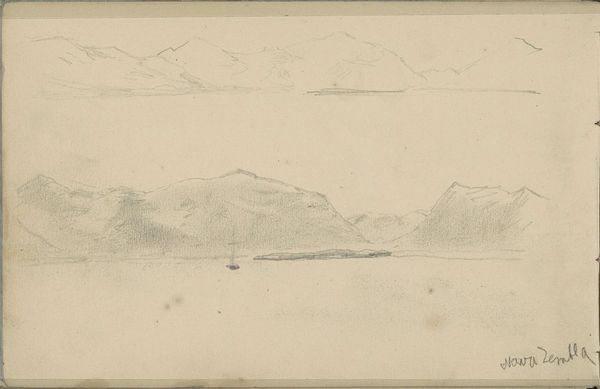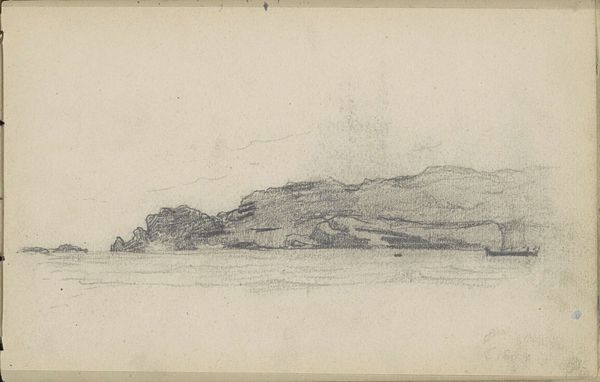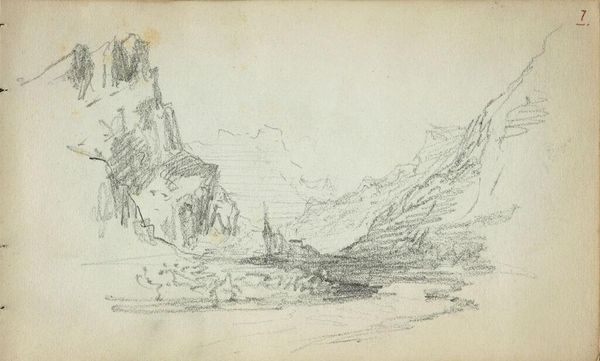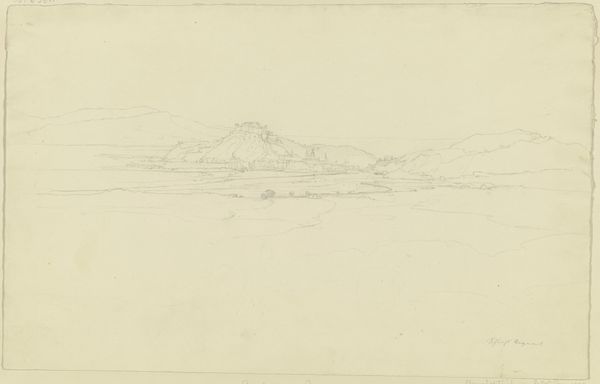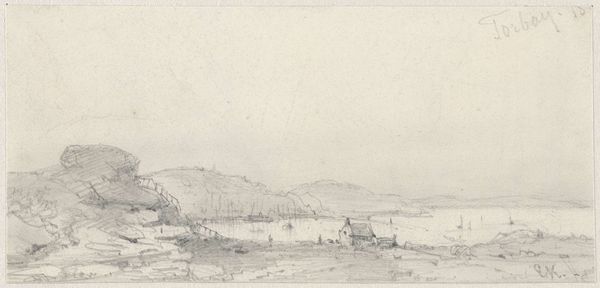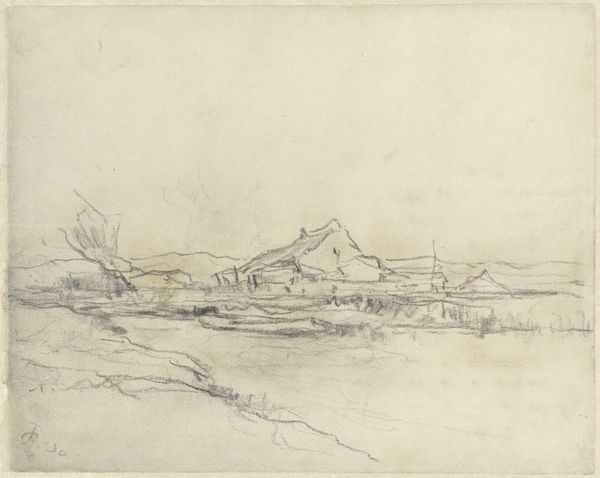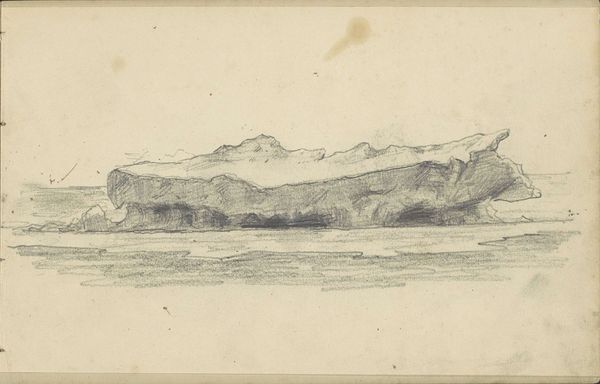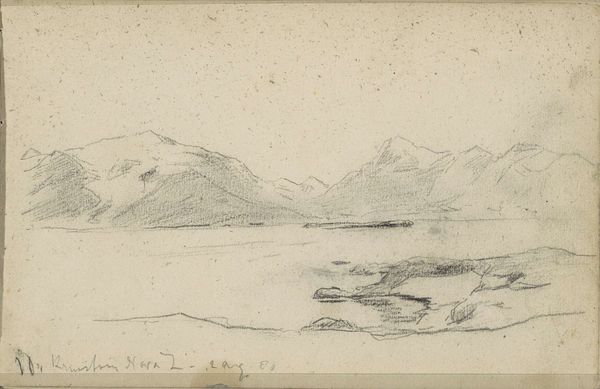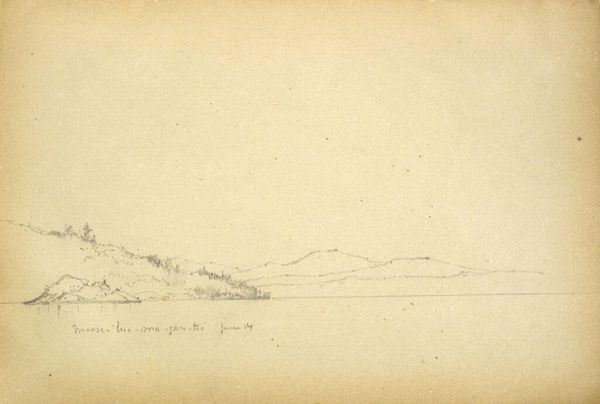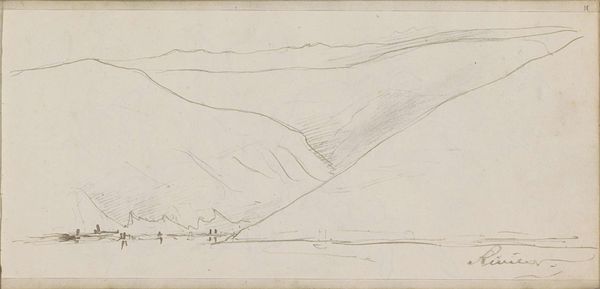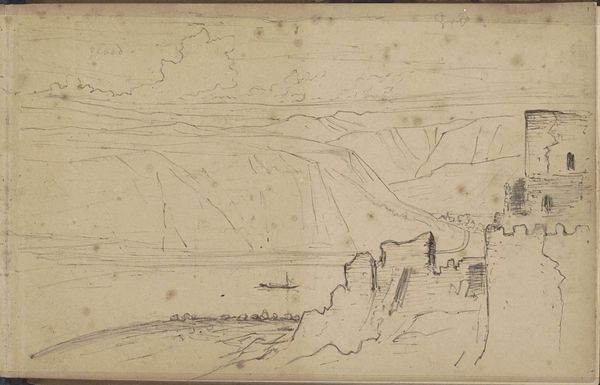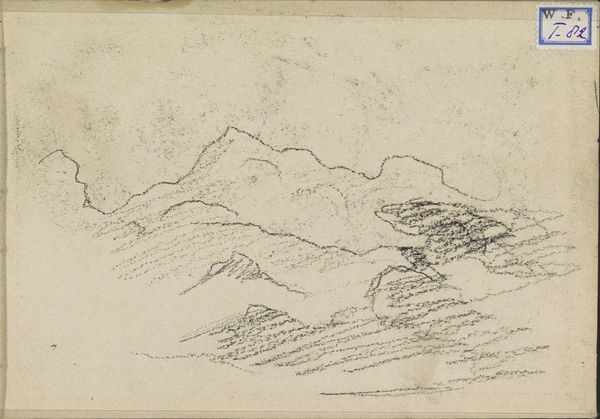
drawing, pencil
#
drawing
#
impressionism
#
pencil sketch
#
landscape
#
pencil
#
realism
Copyright: Rijks Museum: Open Domain
Curator: This sketch evokes a feeling of stark isolation. Editor: Indeed. We're looking at "View of the Coastline of Nova Zembla," a pencil drawing created around 1880 by Louis Apol, presently held at the Rijksmuseum. The sketch depicts a desolate coastal landscape. I see the immediate rawness of the pencil strokes; Apol captures the skeletal geography through minimalist mark making, which communicates to the viewer an impression of emptiness. Curator: For me, it's intriguing to consider this piece within the context of 19th-century artistic production. Artists were often implicated in colonial narratives, and landscape art served to document and often implicitly justify expansion and resource extraction. How does this depiction of Nova Zembla—a remote, Arctic territory—relate to those power dynamics? Did Apol's work contribute to shaping a perception of this area as empty and available for exploitation? Editor: An insightful point. Let's not ignore the interplay of light and shadow, rendered expertly even in such a preliminary sketch. Look at how the faintest lines define the mountain ridges against the sky, while bolder strokes describe the rugged cliffs. Apol uses minimal hatching to construct mass and convey form and the lack of precision is central to its function as impression. It speaks volumes, structurally. Curator: It is worth exploring what sort of labor produced this piece. Apol’s position as an artist allowed him the leisure and resources to create such sketches. Contrast this to the labor involved in the lives of the inhabitants of Nova Zembla or the sailors who frequented those shores, often under harsh conditions. Editor: Absolutely, but look how the pencil itself brings its own kind of ruggedness—it mirrors, to a degree, the landscape it seeks to portray. The drawing has a textural depth of mark that resonates, giving the scene this incredible feeling. The tonality here is subdued and that’s also part of the emotion. Curator: These observations regarding material and representation deepen my understanding. It encourages a critical approach to landscape art as more than a simple depiction but as a production that carries socioeconomic information, laden with historical meanings related to its original and continuing means of production. Editor: By uniting visual study and theoretical ideas, we both expose dimensions of an artwork that might otherwise escape us. Thanks for the engaging chat.
Comments
No comments
Be the first to comment and join the conversation on the ultimate creative platform.
